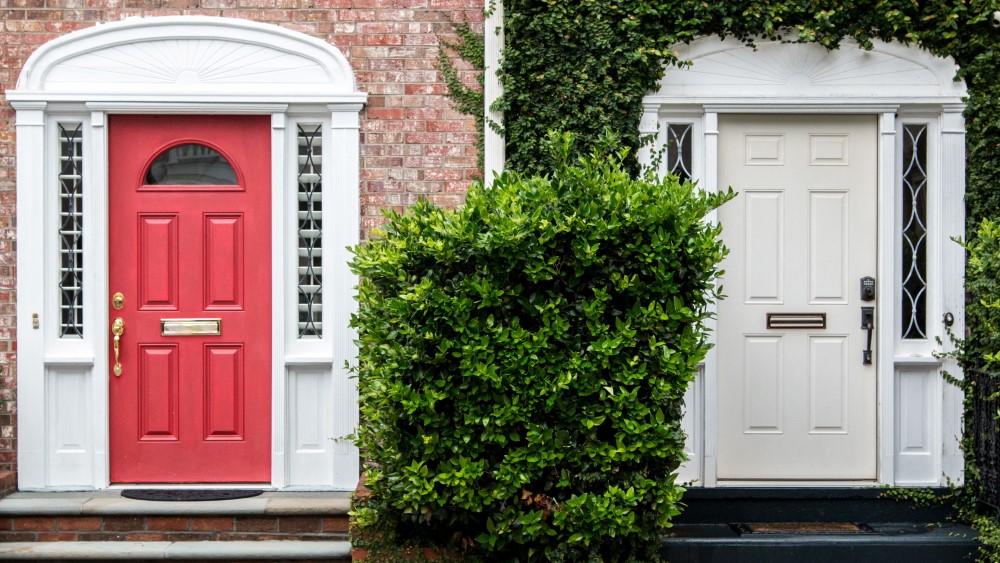Whether you’re planning on buying a new home or building one from the ground up, it’s wise to understand how the materials used during construction affect its overall energy efficiency. Achieving a balance between comfort, total investment and energy savings over time results in a win-win scenario for your family and the environment. What does this balance look like in real life? Let’s evaluate some of the best eco-home building practices.
Passive house: a North Star for energy efficiency
Homes built to the Passive House standard require less energy to heat and cool. The concept originated in Europe during the late 1980s, when low-energy building mandates took effect in Sweden and Denmark. The concept borrowed from building designs out of North America that looked to reduce energy usage during the oil crises of the 1970s. Today over 25,000 buildings are built to this standard. At the core of the idea are five principles:
- Exceptionally high levels of thermal insulation
- Triple-glazed windows and well-insulated frames
- Avoidance of thermal bridges, which act as a conduit for heat to escape. These are typically found at the junction between two or more building elements
- Airtightness
- Ventilation with highly efficient heat/energy recovery
Anyone who has ever researched tips on home energy savings knows that insulation is key in minimizing the influence of outside weather on your indoor climate. The Passive House standard takes the idea to the extreme. The result is a home that acts like a thermos, and conventional heating and cooling systems are rarely needed if executed properly.
In the winter, solar radiation is key for providing warmth. Passive homes tend to face south for this reason. Since very little heat escapes, major appliances and even body heat contribute to warm the home. During hotter months, the great amount of insulation ensures heat stays outside. That’s not to say that air remains stale in a passive house – fresh air exchange is central to the design. Earth-to-air heat exchangers are commonly used. These consist of underground tubes that take advantage of the near-constant temperature of the soil to warm or cool the air. Occupants can leverage cross-ventilation and the chimney effect of air exchange through features like skylights.
Unfired bricks
The building industry contributes to roughly one-third of all CO₂ emissions, which is why it’s important to evaluate alternative construction methods. If you’re building an eco-conscious home, mudbricks (or unfired bricks) are one of the cleanest materials you can find. For thousands of years, builders mixed water, earth and strong natural fibers together in brick molds that were left to cure in the sun. This contrasts with the bricks commonly used today, which are cured in furnaces that heat up to 1,800 degrees Fahrenheit. This results in a stronger final product, but the environmental impact of the process is not negligible. Producing 1,000 fired bricks results in emissions of 12,130 lbs CO₂e, mainly due to the large amount of oil and gas required to power the furnace and the fumes produced during burning as well.
Are unfired bricks the right choice for your home? You’ll need to speak with an expert. True sun-dried bricks can take several months to produce for an entire home. They are ideally used in two-story homes in conjunction with thick walls to make up for their lesser compressive strength. Mild climates are favored because unfired bricks need protection from extreme weather like driving rain. A hybrid manufacturing method that sees concrete added to the mud mixture can shorten the hardening time and add strength, but also increases the bricks’ carbon footprint.
Of course, bricks are just one component of a home under construction. Get to know the carbon footprint of other materials needed to build your home and see if you can source eco-friendly alternatives. Sustainability-certified or reclaimed wood, insulation made from recycled materials, recycled rubber and plastic, and even tiles created from wine corks are at your disposal.
Harnessing the unlimited power of the sun
The sun’s energy should be harnessed in as many ways as possible if we are to achieve climate change goals. At home, solar power can be used even without photovoltaic panels. Consider solar water heating, a system that uses solar thermal collectors on the roof to heat up tanks of water piped into the home. Solar water heating can take a chunk out of the cost of heating water for bathing, laundry and washing dishes, which can amount to as much as 25% of your total utility bill.
Of course, the sun can power every electronic device in your home through the use of solar panels. We’ve covered this topic extensively in other blog posts, and have made the case that residential solar is a good investment. Good preparation is key to achieving enhanced energy independence with your solar panels – by properly sizing your system based on future energy needs and reducing instances of wasted electricity, you can also reduce your reliance on grid power.
The smart home energy space can get quite complex with every added component that introduces new options for homeowners. Smart thermostats and LED lightbulbs are straightforward, while solar power, EV charging and stationary battery management can be interrelated and actively managed. When your home produces more energy than it consumes, you can dictate what you want to do with that excess power. It can be stored, used to charge an EV or sold back to the utility. Devices that automatically optimize this decision-making process should be part of every green home in the future.
Save energy, save costs
New homes built in America can be integral parts of a low-carbon future and serve as inspiration to subsequent generations. There’s room for improvement over the status quo: better materials, innovative building conventions and smarter home energy tech can work together to reduce greenhouse gas emissions.
Sources:
https://passivehouse-international.org/upload/Passive_House_Active_for_more_comfort_brochure.pdf
https://passivehouse-international.org/index.php?page_id=290
https://passivehouse-international.org/upload/20210215_Press_Release_Campaign_Efficiency_First.pdf\
https://www.sciencedirect.com/science/article/pii/S0959652620330432
https://www.thenbs.com/knowledge/earth-bricks
https://www.yourhome.gov.au/materials/mud-brick
https://ecobnb.com/blog/2020/06/building-eco-friendly-house/
https://www.mindbodygreen.com/articles/sustainable-home-starter-steps
https://dozr.com/blog/sustainable-building-materials
https://www.energy.gov/energysaver/solar-water-heaters
https://www.thisoldhouse.com/green-home/21014968/solar-hot-water
Photo by Landon Martin on Unsplash


